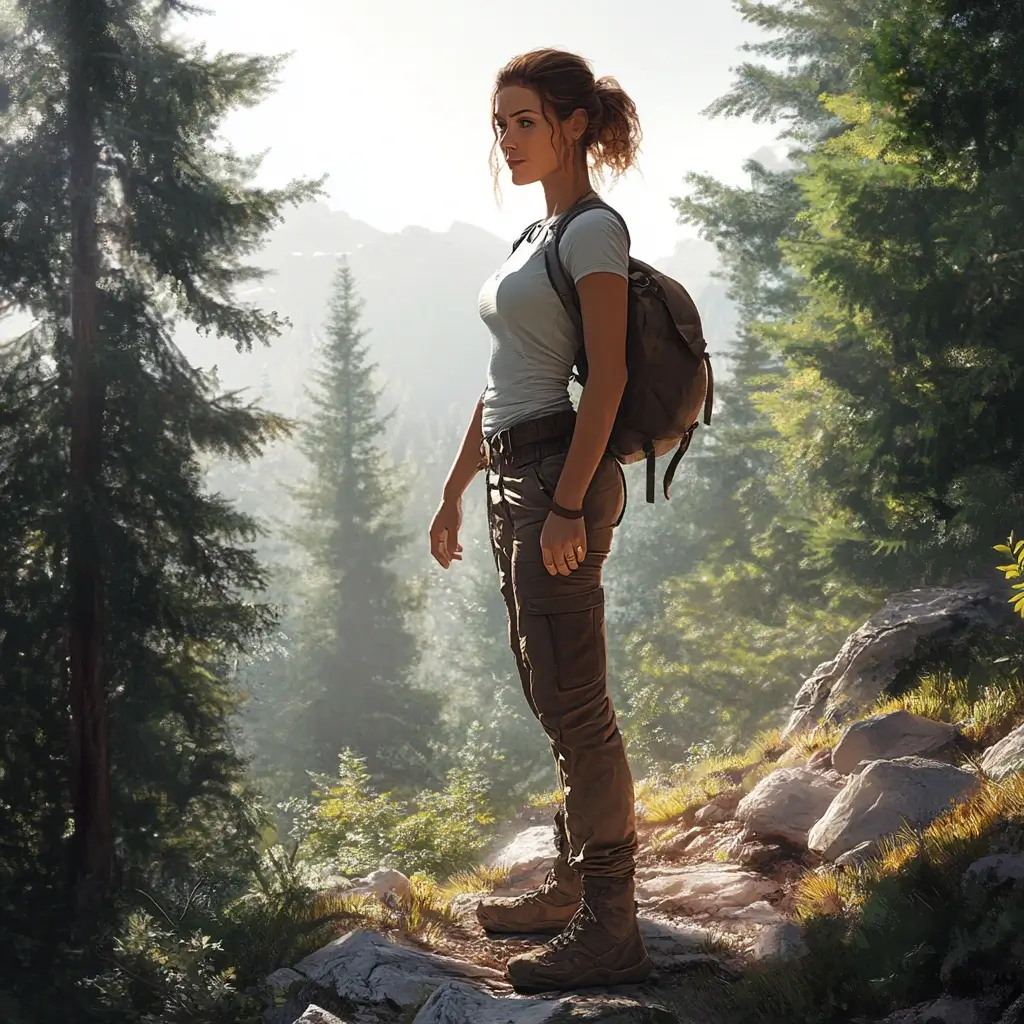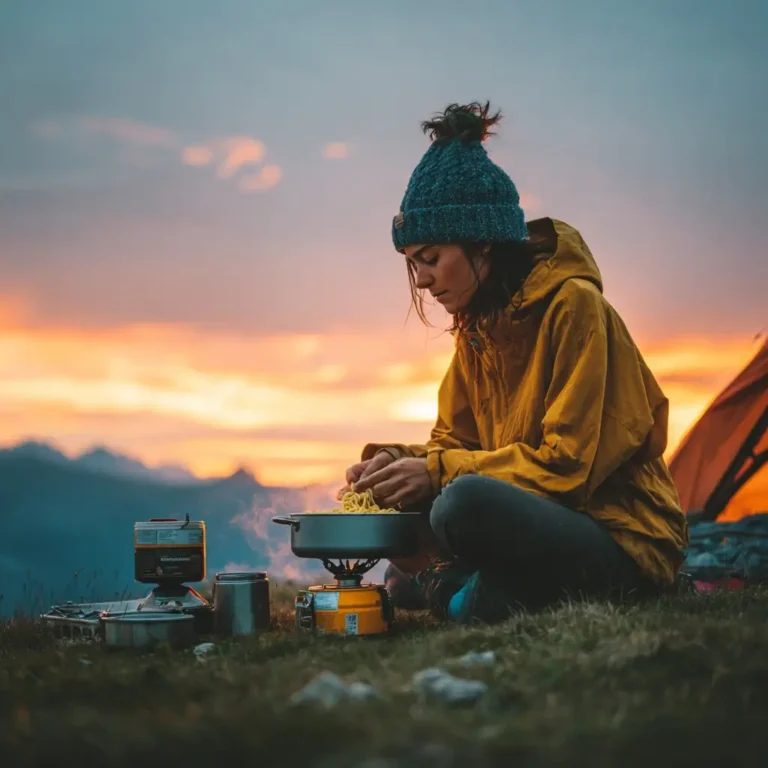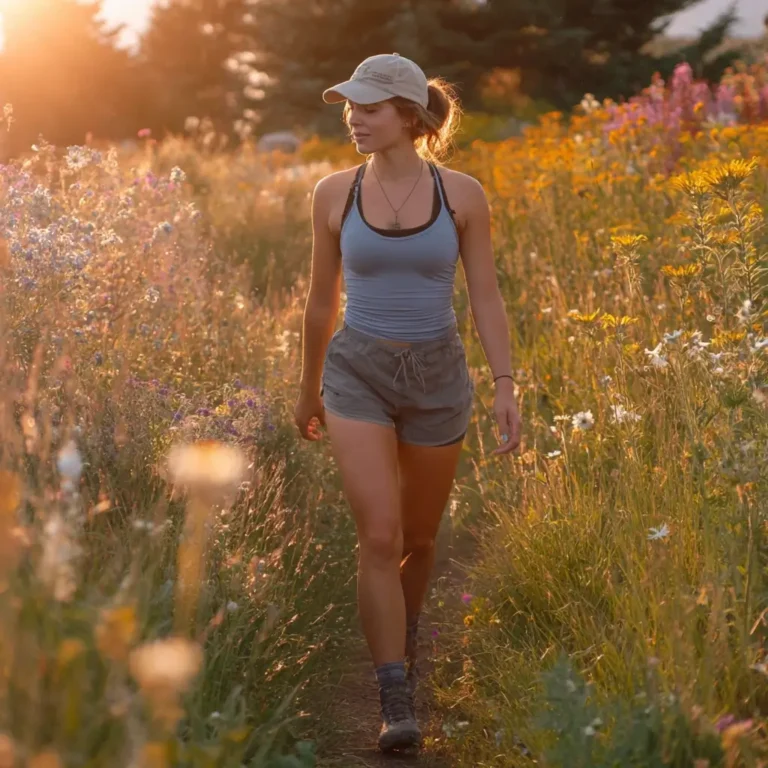There’s nothing like that feeling of lacing up your boots, strapping on your pack, and setting off into the wilderness. But nothing ruins a great hike faster than poor clothing choices. Chafing, overheating, freezing, or sore feet can all turn an epic adventure into a struggle. That’s why your hiking outfit matters—a lot.
A great hiking outfit isn’t about fashion (though hey, we love cute gear too 🧡); it’s about function. The right clothes regulate your temperature, protect you from the elements, and keep you moving comfortably all day long. Whether you’re headed for a casual stroll through a local forest or tackling serious elevation gain, it all starts with what you wear.
Tops: Breathable Layers That Work for You 👕

When you’re hitting the trail, the right top can make or break your hike. We’ve all experienced the discomfort of sweat-soaked cotton clinging to our backs—and trust us, once is enough. That’s why breathability, moisture management, and layering potential are non-negotiables when it comes to your hiking tops.
For warm-weather hikes, your go-to should be lightweight, moisture-wicking fabrics like polyester, merino wool, bamboo blends, or technical synthetics. These materials pull sweat away from your skin, helping you stay dry, cool, and comfortable—even on uphill climbs under the blazing sun. Look for tank tops, short-sleeve performance shirts, or crop tops with mesh panels for extra ventilation.
When the temps drop or elevation climbs, layering becomes essential. Start with a base layer that hugs your body and wicks moisture. Add a mid-layer like a lightweight fleece or grid-knit pullover for insulation. Finally, top it off with a breathable windbreaker or shell jacket that shields against wind and drizzle without trapping sweat.
🎽 Best Base Layers:
- Polyester or merino wool tees
- Long-sleeve synthetic shirts for UV protection
- Zip-neck tops for adjustable airflow
🧥 Mid and Outer Layers:
- Lightweight fleece jackets for spring or fall
- Softshells or windbreakers that block the breeze without overheating
- Rain jackets with pit zips to release heat while staying dry
✨ Amazon Pick: Check out the Columbia Silver Ridge Lite Long Sleeve Shirt for sun protection and trail-ready style.
Bottoms: Comfort, Flexibility, and Protection 👖
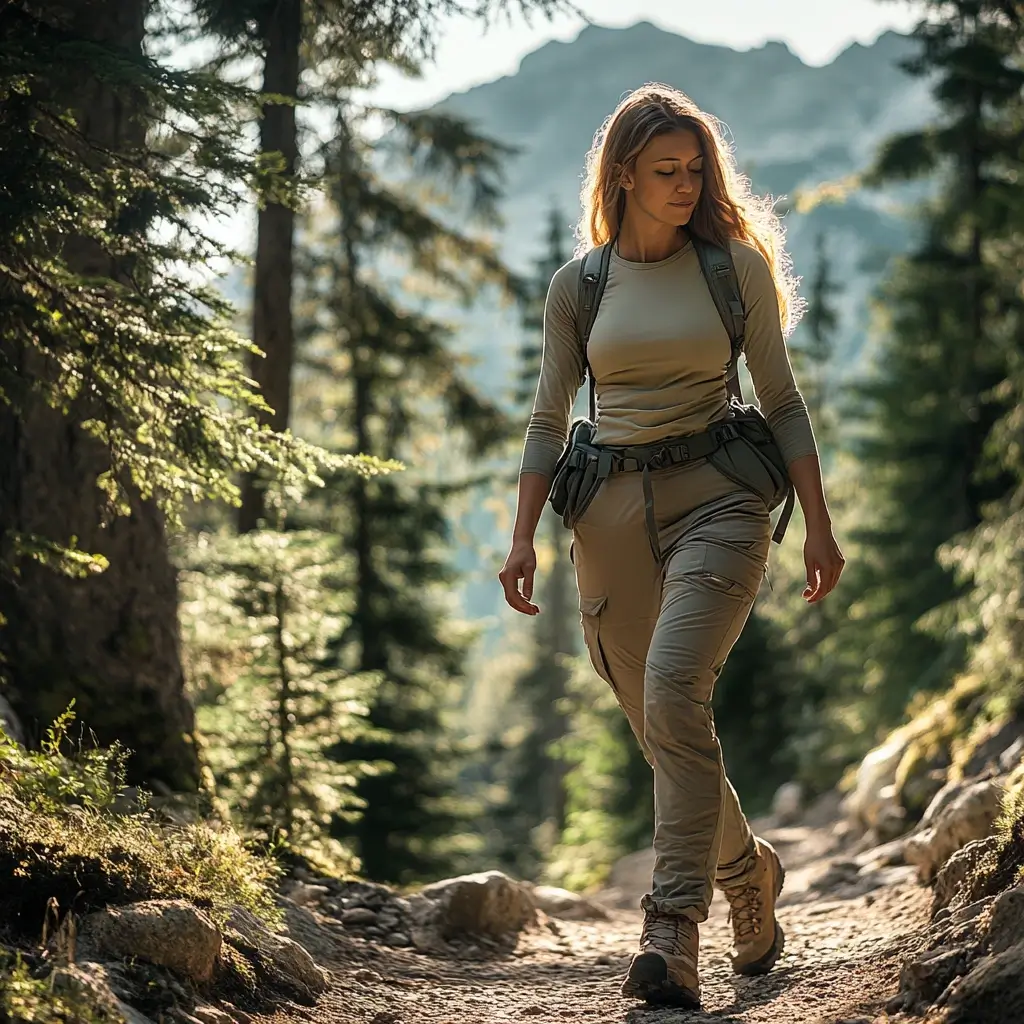
When it comes to choosing the perfect hiking bottoms, you need a balance of freedom, function, and durability. Whether you’re scaling rocky trails or strolling through forest paths, your legs need the same attention as your upper body. The right pair of bottoms can help you stay cool, prevent chafing, and shield your skin from scrapes, bugs, and UV rays.
In warmer months, hiking shorts or convertible pants (that zip off at the knee) are your best bet. Look for quick-drying, lightweight materials like nylon or spandex blends that move with you and don’t trap heat. Built-in liners in shorts can add extra support and comfort, especially on long hikes. Don’t forget cargo-style pockets—they’re perfect for holding snacks, maps, or your phone without needing to reach into your pack.
For cooler weather or rugged trails, leggings or hiking pants with reinforced knees and water resistance offer excellent protection. Stretchy materials help with movement, while elastic waistbands or adjustable belts ensure a secure fit. Gusseted crotches and articulated knees also increase flexibility, reducing the risk of rips or discomfort on steep climbs.
🎯 Pro tip: Always avoid cotton—once it’s wet, it stays wet. Synthetic or merino wool leggings keep you dry, warm, and blister-free.
🩳 Summer Trails:
- Lightweight hiking shorts with a built-in liner or anti-chafe design
- Options with stretch and multiple pockets are gold
👖 Cooler or Rugged Terrain:
- Hiking pants with stretch panels and reinforced knees
- Convertible zip-off pants give you flexibility for changing temps
🧘♀️ For the Legging Lovers:
- Choose performance leggings with moisture-wicking and abrasion-resistant fabric
- Compression tights are great for muscle support on long hikes
✨ Amazon Pick: The BALEAF Women’s Hiking Pants are stretchy, breathable, and perfect for the trail.
Footwear: The Foundation of Every Hike 🥾

f there’s one thing that can make or break your hike, it’s your footwear. From slippery stream crossings to rugged mountain switchbacks, your feet need support, grip, and comfort every step of the way. A good pair of hiking shoes or boots isn’t just a luxury—it’s a game-changer. 🏔️
Let’s start with the basics: trail runners vs. hiking shoes vs. hiking boots. For light hikes and well-maintained paths, trail running shoes are lightweight and breathable, offering flexibility and speed. But for longer treks or uneven, rocky terrain, mid or high-cut hiking boots are your best friends. They provide ankle support, toe protection, and more durable soles for rugged adventures.
👟 Types of Hiking Shoes:
- Hiking Boots: Best for rough terrain, ankle support, and longer hikes
- Trail Runners: Great for light hikes and speed
- Approach Shoes: Ideal for rocky trails and scrambling
Tips:
- Break them in before your hike
- Pair them with hiking socks (more on that next!)
- Choose waterproof or breathable versions depending on climate
✨ Amazon Pick: We love the Merrell Moab 3 Hiking Boots for their durability and comfort.
Essential Accessories for Every Trail 🧢🕶️
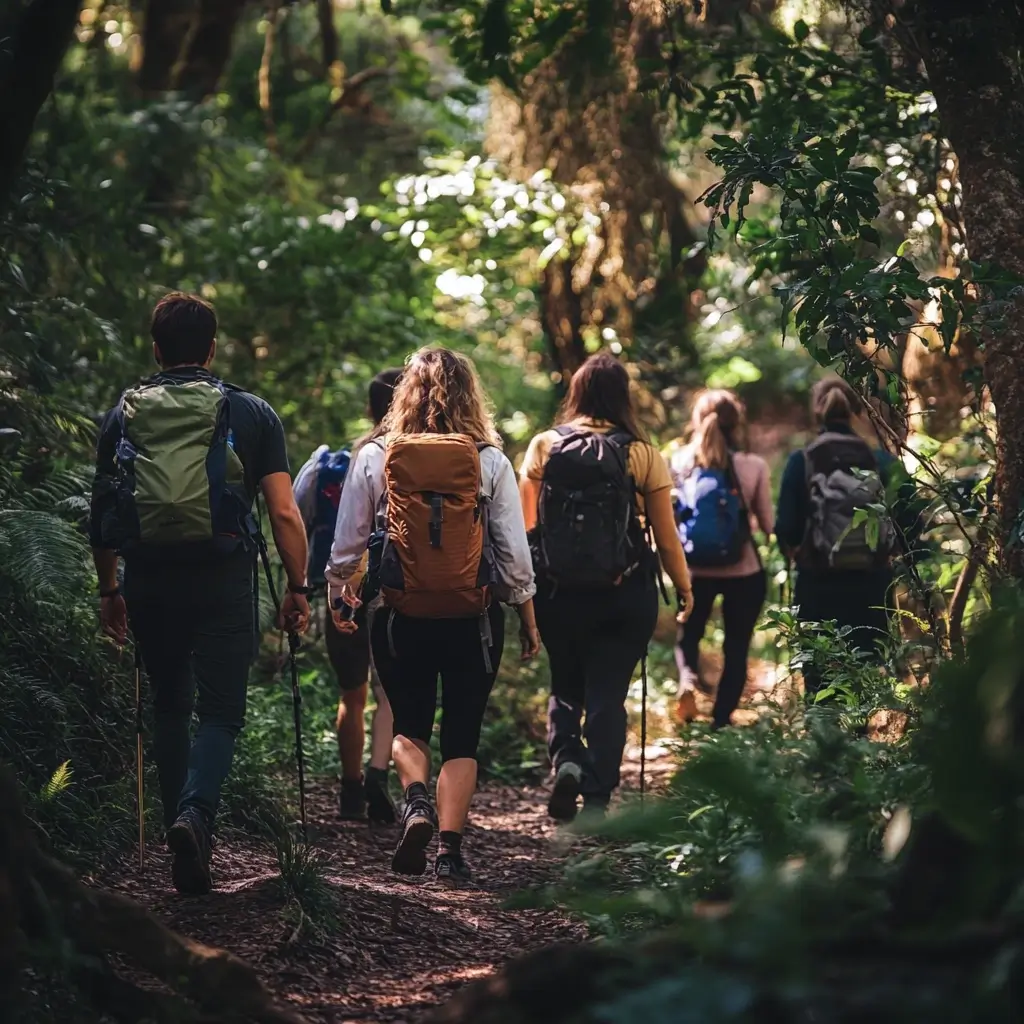
Accessories may seem like extras, but when it comes to hiking, they’re often what make the difference between an okay hike and a totally epic adventure. Whether you’re tackling a short day hike or venturing deep into backcountry trails, the right add-ons can boost your comfort, safety, and overall trail experience. 🎒✨
Let’s dive into the hiking accessory must-haves:
🧢 Sun Protection
Start at the top—literally. A wide-brimmed hat or a lightweight trail cap shields your face from harmful UV rays and keeps sweat out of your eyes. This simple piece can save your skin on sunny days and help regulate body temperature.
🕶️ Sunglasses
Don’t underestimate the importance of UV-protective sunglasses, especially at higher altitudes where the sun’s rays are stronger. Go for polarized lenses to reduce glare and improve visibility, especially around water or snow.
🧴 Sunscreen & Bug Spray
While not worn, these trail companions deserve a spot in your pack. Choose sweat-resistant SPF 30+ sunscreen and DEET-free insect repellent to keep bugs and burns at bay.
🧣 Buffs, Bandanas & Neck Gaiters
These versatile accessories protect your neck from sun, absorb sweat, double as a dust mask, and even work as a headband or emergency rag. Lightweight and multifunctional = trail gold.
🎧 Optional but Fun: Wireless Earbuds
For solo hikers or familiar trails, a good playlist or nature podcast can keep you motivated. Just stay aware of your surroundings—safety always comes first!
💡 Headlamp or Flashlight
Even if you don’t plan to hike after sunset, it’s smart to carry a small, lightweight headlamp in case your trek takes longer than expected. It’s a game-changer for early morning starts or unexpected delays.
✨ Amazon Tip: Check out the GearLight LED Headlamp Pack —super bright, lightweight, and includes two, so you always have a backup or a friend covered!
💧 Hydration Gear
Hydration is non-negotiable. Whether it’s a classic reusable water bottle, a hydration bladder, or even a collapsible bottle for ultra-light hikes, staying hydrated helps prevent fatigue and heat-related issues.
🧤 Gloves & Layers
For chillier hikes or higher elevations, lightweight gloves and arm warmers come in handy. They don’t take up much room but can make a huge difference in comfort and temperature regulation.
Accessories aren’t just the finishing touches—they’re functional tools that enhance every part of the journey. Think of them as the secret sauce to hiking success. 🌄
Weather-Specific Hiking Outfit Tips ☀️❄️🌧️
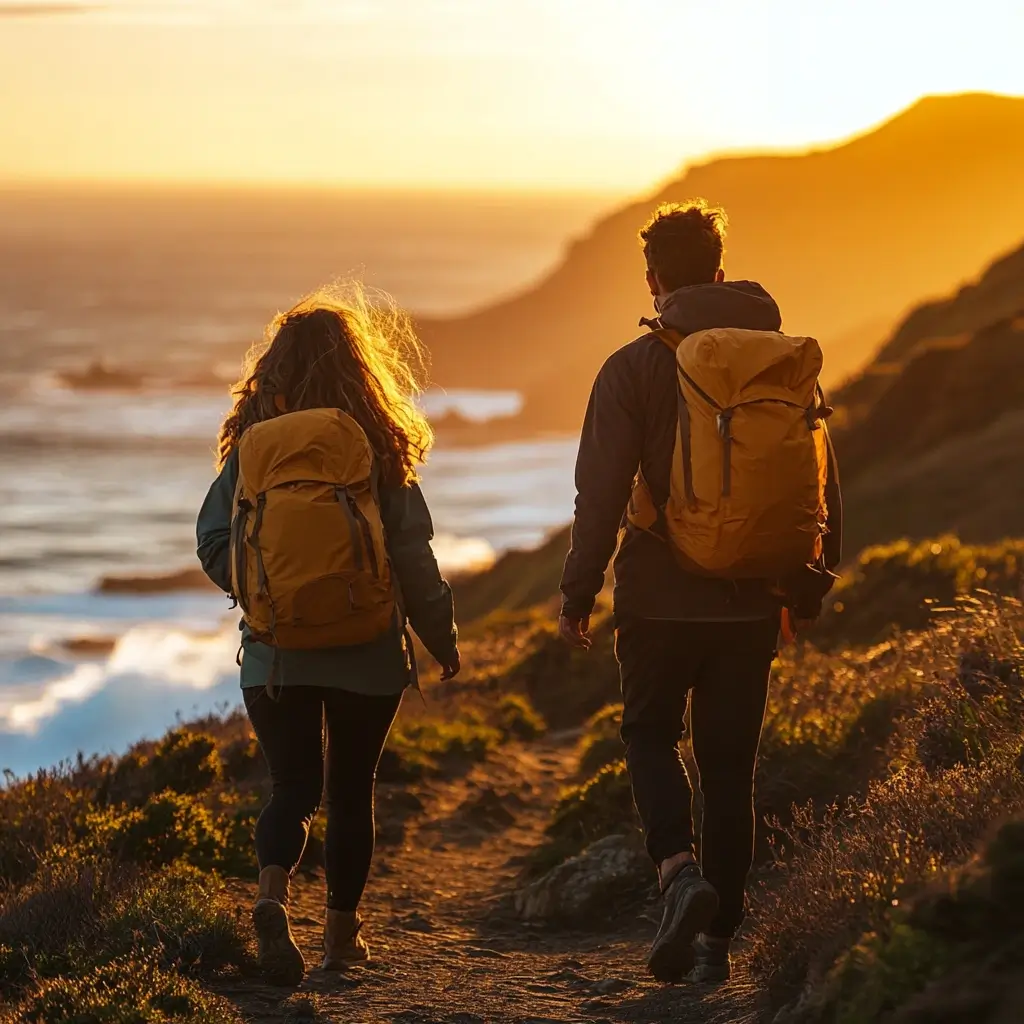
Mother Nature keeps us on our toes, which means your hiking outfit needs to be ready for anything—from blazing sunshine to sudden downpours to brisk alpine mornings. Dressing smart for the weather ensures you stay comfortable, dry, and safe no matter what the trail throws your way. 🌦️
Let’s break it down by the three main weather scenarios:
☀️ Hot Weather Hiking
In summer or desert climates, overheating and sunburn are real risks—so choose light and breathable gear.
- Tops: Go with sleeveless or short-sleeve shirts made of moisture-wicking fabric like polyester or nylon. Look for UPF-rated materials for added sun protection.
- Bottoms: Opt for lightweight hiking shorts or convertible pants with zip-off legs.
- Accessories: A wide-brimmed hat, cooling neck gaiter, and sunglasses are essential.
- Shoes: Breathable trail runners or ventilated hiking sandals (with good grip!) work great.
💡 Amazon Tip: Try Mission Cooling Towels—they activate with water and provide instant heat relief!
❄️ Cold Weather Hiking
When temps drop, layering becomes critical to stay warm without overheating.
- Base Layer: Start with a thermal, moisture-wicking base like merino wool or synthetic blends.
- Mid Layer: Fleece or light down jackets provide insulation.
- Outer Layer: A windproof and waterproof shell blocks the chill and wet.
- Bottoms: Thermal leggings or insulated hiking pants keep your legs toasty.
- Accessories: Gloves, beanie, wool socks, and even crampons for icy trails.
💡 Amazon Tip: The BALEAF Fleece Lined Leggings are warm, comfy, and trail-tested.
🌧️ Rainy & Wet Conditions
Don’t let a little rain stop your adventure—just gear up properly!
- Rain Jacket: Invest in a lightweight, packable, waterproof jacket with a hood.
- Waterproof Pants: Great for heavier rain and muddy trails.
- Footwear: Waterproof hiking boots or trail shoes with sealed seams.
- Extras: Use a rain cover for your backpack and stash gear in dry bags to protect electronics and snacks.
💡 Amazon Tip: We love the Rain Jacket for its breathability and reliability.
🌈 Bonus Tip: Layer Smart
Always follow the Three-Layer Rule when planning for changing weather:
- Base Layer to wick sweat
- Insulating Layer to keep warm
- Outer Shell to protect from wind and rain
By dressing strategically for the conditions, you’ll stay comfortable, dry, and energized all hike long. After all, the trail should be an adventure, not a struggle with soggy socks or sunburnt shoulders. 😉
Our Favorite Hiking Outfit Combos 🔥

When it comes to hiking outfits, there’s no one-size-fits-all solution—your gear should change with the season, the terrain, and your personal style. That said, we’ve tested a ton of looks on the trail and have narrowed it down to our go-to hiking outfit combos that balance comfort, protection, and style. Whether you’re hitting a sunny trail or a misty forest path, here are our favorites:
🌞 Summer Day Hike
- Top: Lightweight moisture-wicking tank or tee
- Bottom: Quick-dry hiking shorts with a comfy waistband
- Footwear: Breathable trail running shoes or hiking sandals
- Accessories: Sunglasses, cap, hydration pack, SPF 50+ sunscreen
🍂 Chilly Fall Morning
- Top: Long-sleeve performance base layer + fleece pullover
- Bottom: Stretch hiking leggings with thermal lining
- Footwear: Waterproof mid-cut boots
- Accessories: Beanie, gloves, light neck gaiter
❄️ Snowy Winter Trail
- Top: Merino wool base layer + insulated jacket + waterproof shell
- Bottom: Insulated hiking pants or fleece-lined tights under shell pants
- Footwear: Insulated waterproof boots with wool socks
- Accessories: Thermal gloves, balaclava, ski hat, gaiters
🌧️ Rainy Day Adventure
- Top: Moisture-wicking tee + lightweight waterproof rain jacket
- Bottom: Quick-dry leggings or waterproof hiking pants
- Footwear: Waterproof boots with good traction
- Accessories: Pack cover, hat with brim, rain mitts
🌄 High-Altitude Sunrise Hike
- Top: Thermal base layer + insulated vest + windbreaker
- Bottom: Full-length performance tights with side pockets
- Footwear: Rugged hiking boots with ankle support
- Accessories: Buff, gloves, sunglasses, compact headlamp
Our Experience with Hiking Outfit 🥾🌄

Over the years, we’ve learned that the right hiking outfit can make or break an adventure. We’ve hiked through deserts under the scorching sun, scrambled over wet, rocky terrain, and powered through crisp alpine trails—and every time, our gear made all the difference. On one memorable trek in the Pacific Northwest, the weather changed from sunny to stormy within hours. Thankfully, our quick-dry layers and waterproof outer shells kept us warm and comfortable while other hikers were soaked and shivering. Another time, a summer hike in Zion taught us that breathable fabrics and a good sun hat are non-negotiables in extreme heat.
We’ve tested dozens of combinations, from moisture-wicking tanks to thermal leggings, lightweight trail shoes to full-support hiking boots. Our current go-to outfit is a long-sleeve UPF shirt, convertible pants, and breathable ankle-high boots—practical, protective, and surprisingly stylish! We’ve also fallen in love with hiking-specific socks (yes, they really matter!) and functional accessories like hydration packs and reflective hats.
Each outing continues to teach us something new, but one thing is certain: dressing smart lets you focus on the trail, the view, and the joy of the journey—not your gear. That’s why we’re so passionate about sharing what works!
FAQ – Hiking Outfit
How to dress for a hike woman?
When dressing for a hike, women should opt for moisture-wicking, breathable layers that are weather-appropriate and comfortable. A well-fitting sports bra, lightweight top, durable bottoms (like hiking leggings or pants), supportive footwear, and protective accessories like a hat and sunglasses are key.
What are the 10 essentials for day hiking?
The 10 essentials include: 1) Navigation (map/compass or GPS), 2) Sun protection (sunglasses/sunscreen), 3) Insulation (extra layers), 4) Illumination (headlamp/flashlight), 5) First-aid kit, 6) Firestarter (matches/lighter), 7) Repair kit and tools, 8) Nutrition (extra food), 9) Hydration (water/bottle/filter), and 10) Emergency shelter (blanket or bivy sack).
Do I need to wear a bra while hiking?
Yes, wearing a high-impact sports bra while hiking provides essential support, reduces discomfort, and helps wick away sweat. It enhances comfort, especially on longer or more strenuous hikes.
Should I wear leggings or pants for hiking?
It depends on the trail and weather—leggings offer stretch and comfort for moderate conditions, while hiking pants provide better protection from the sun, bugs, and rough terrain. Convertible pants are also a great versatile option.
Final Thoughts & Trail-Ready Vibes ✨

Choosing the perfect hiking outfit isn’t just about style—it’s about functionality, safety, and enhancing your trail experience. The more you hike, the more you’ll learn what works for your body, climate, and comfort. Don’t forget to pack light, dress smart, and always check the weather before you head out!
🎒 Ready to upgrade your hiking gear? Head to Amazon for everything from trail shoes to sun hats—you’ll find what you need to hit the trail with confidence.
👉 If you liked this blog post about the topic “hiking outfit,” don’t forget to leave us a comment below to share your favorite trail looks!
👉 If you’re interested in hiking outfit inspiration, you might also enjoy our article about Women Hiking Outfit Summer: Ultimate Style in 2025! on our blog.

